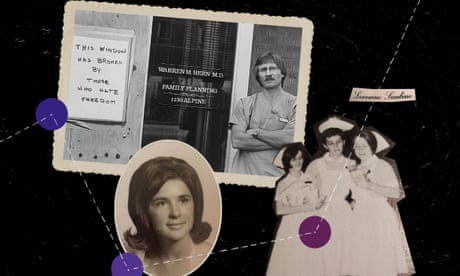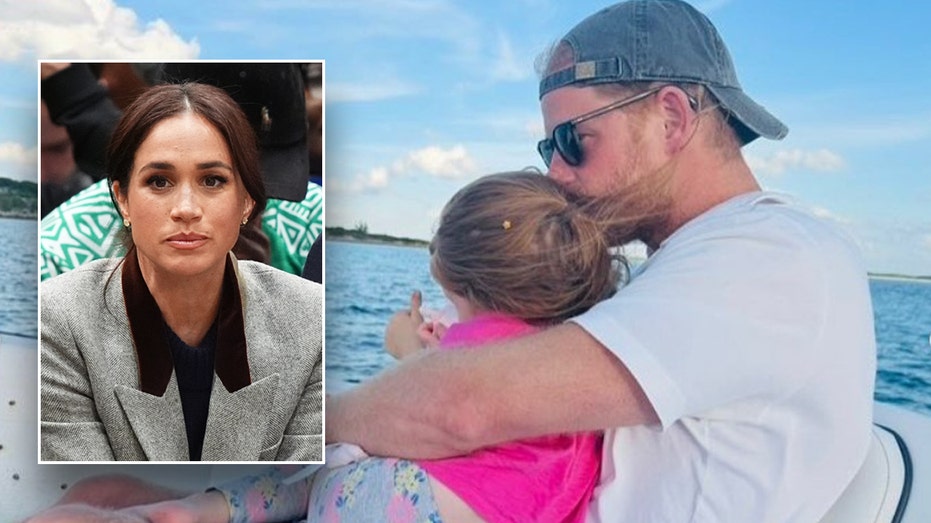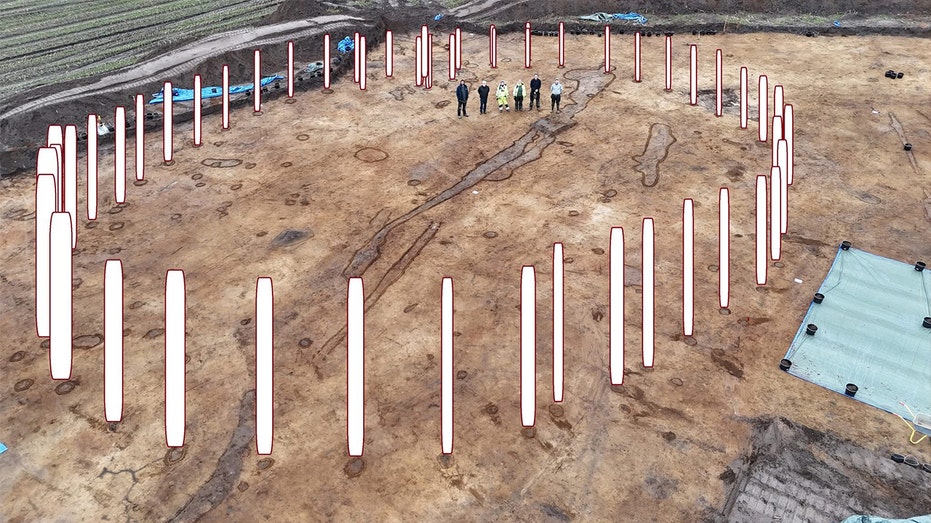- by foxnews
- 10 Mar 2025
‘It was a nightmare’: life in the US before legal abortion
‘It was a nightmare’: life in the US before legal abortion
- by theguardian
- 23 Jan 2022
- in news

Saturday marks the 49th anniversary of the supreme court's Roe v Wade decision, the landmark ruling that guaranteed the right to an abortion in the US. It could be the last anniversary before it is overturned.
During oral arguments for Dobbs v Jackson Women's Health Organization last year, a majority of the court appeared ready to severely weaken or overturn Roe v Wade, allowing dozens of Republican-led states to acutely restrict access, or ban abortion entirely. A decision is expected this summer.
Such a reversal would be historic. Many Democratic-led states are now likely to pass laws cementing abortion protections, creating oases of access to the procedure in safe, legal settings. But options would still be far more limited.
The 19th spoke with people across the country about their memories of life before the landmark decision, as well as how things have changed in the years since.
The illegal abortion was in 1966. I had just turned 20. It was the first guy I slept with, and I did not know shit about birth control or any other thing. I was living at home with deeply conservative parents who I simply could not tell. I had a very good friend who was at Goucher College, in Townsend, Maryland. It was a girls' school and they had a network, a pipeline to a gynecologist in Baltimore.
So I got myself to Baltimore. [The gynecologist] was a lovely lady. She gave me a little tiny folded piece of paper with a phone number on it.
I call the number and some guy answers, and the arrangements are made - it's supposed to be $600 in cash. We agree on a date and a pickup point, which was on Utah Street in downtown Baltimore, in front of a movie theater. We pick the date and the time. And then I have to find $600. I mean, that was a lot of money in 1966.
So I borrowed $100 here and $50 there. The day before the abortion, I was $200 short. This boy was just a real prick, so I called his parents. They gave him $600 and he gave me $200 that I was short.
He did drive me to Utah Street, and I stood there waiting to be picked up. Finally, a man in a sedan with a dog in the backseat pulls up. He could have been a serial killer, but he had a dog. That's how you knew it must be OK.
And then the guy drives me back to the movie theater on Utah Street. I stayed with a friend. I didn't go back to my parents at night. That was it. At the time, I had a job working on the Hill for a Maryland congressman. And I was absolutely crazed that I had done this. I had done this illegal thing, and was that going to come back and - you know? But nobody ever found out about it.
Was I scared? I was terrified on the operating table. I couldn't stop shaking. Would I have changed my mind? No, I would have driven off a bridge before I would have had a baby. I would have been forced into a marriage with a completely unsuitable human being.
Rosalyn Jonas, 75, Bethesda, Maryland
I graduated in 1967 from high school, and when I was 18, I went straight into nursing at Brooklyn, New York: Kings County Hospital Center School of Nursing.
I wasn't even aware of the abortion laws in New York. I mean, you heard stories of people who were going to some back rooms or doctors. Then somebody would disappear. There was a hush she was pregnant and she'd be away. So we didn't know whether she went to an aunt to have a baby or was pushed off somewhere to have an abortion. But everything was hush hush. We didn't talk about it at all.
I was assigned to a 16-year-old [at nursing school]. I walk into the room, and there were like six or eight doctors standing around this beautiful looking girl. I mean, I'm 18, she's 16. And her eyes are rolled back. She's thrashing all over the bed. And all these docs are totally helpless.
This kid was pregnant. She went for a pill. And then she went for a coat hanger, because she wasn't sure it was working.
She was a Catholic kid. She didn't have anybody or anywhere to go, she didn't know where to look for help. I'm in charge of taking temperature. The temperature is going up. It gets to 107.
Oh, it was the most horrible thing I have ever seen in my life. She dies in front of all of these doctors, and they're helpless.
I was a Catholic teen. But right then and there I thought no one, no matter what kind of mistake or goof-up or whatnot they did in their life, they shouldn't have to suffer and die like that.
It was a nightmare. And I will for my whole life never forget it. It traumatized me. But it made me firmly in the camp that no matter what you do in your life, nobody should have to go through that.
Lorraine Saulino-Klein, 72, of Laramie, Wyoming
I began to get acquainted with this issue when I was a junior medical student - this is back in 1963. Every night that I was on call in the gynecology ward, my colleagues and I were up all night taking care of the women who had either self-induced or poorly done illegal, unsafe abortions.
About that time, there was a woman who had gone to the emergency room to see if they could end the pregnancy. She was several months pregnant. When they refused, she went home and shot herself in the uterus and then drove to the hospital.
This is an example of the kind of catastrophic things that women did to themselves. They would put lye in their vagina to induce an abortion. They literally used coat hangers and knitting needles. They died.
I began studying public health. What I decided to work in was population epidemiology, and that included looking at the health effects of illegal abortion.
It became clear to me that the effects of illegal abortion and the abortion laws were visited particularly upon women who were poor or many members of minority groups. The death rate due to illegal abortion was nine times higher among Black women than it was among white women.
There was a group in Boulder that wanted to start a private nonprofit abortion clinic. And they got my name and called me and asked me if I would be willing to help them start this clinic. I had no intention of doing something like that. But when they invited me, I accepted.
Implementing the Roe v Wade decision was extremely important. The decision itself didn't get anybody an abortion; it was only meaningful if doctors were willing to perform the abortion.
We started performing abortions in November 1973. I immediately became the target of hatred by not only the public, but members of medical community. I was living up in the mountains in a cabin I got with my father, and I was very, very frightened. I expected to be assassinated any time.
I love seeing patients and enjoy talking with them. And they tell me their stories. And every, every single one has an important story to tell.
Most of my patients now or at least at least half of them, sometimes more, are patients who have desired pregnancies that have a terrible complication of fetal disorder, genetic disorder. And they've decided to end the pregnancy, even though it's a desired pregnancy. We see a lot of patients with those circumstances.
We see patients who are extremely young, 11 and 12 years old, who've been raped or sexually abused. Victims of incest. These young girls should not have to carry a pregnancy to term. It's very dangerous for them. They're not prepared to be a parent.
But in any case, right now as we speak, we have anti-abortion fanatics in front of my office. There's a man that comes and stalks me every Tuesday morning. And I think he wants to kill me. I have to assume that, because five of my medical colleagues have been assassinated.
Warren Hern, 83, of Boulder, Colorado
- by foxnews
- descember 09, 2016
Ancient structure used for cult 'rituals' discovered by archaeologists
A Neolithic Timber Circle was discovered by archeologists in Denmark resembling the historical landmark Stonehenge in the U.K. It is open to be viewed by the public.
read more


